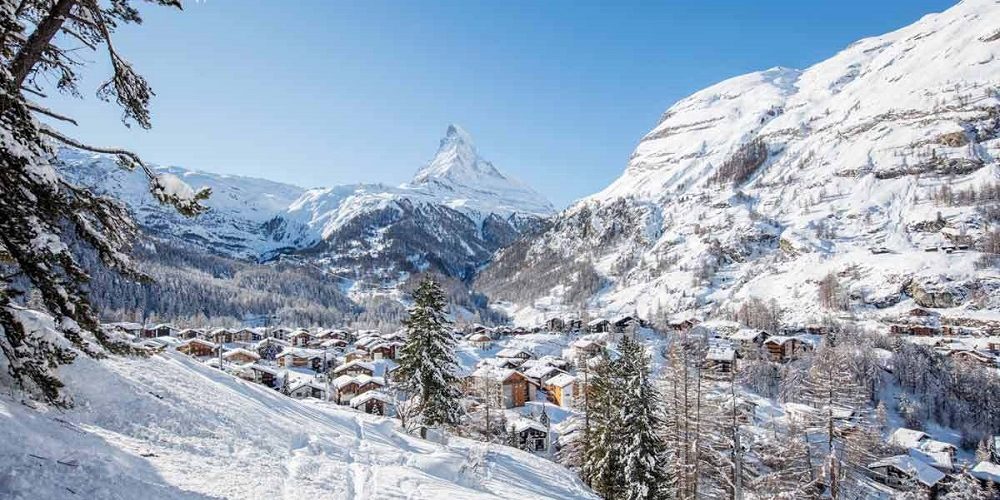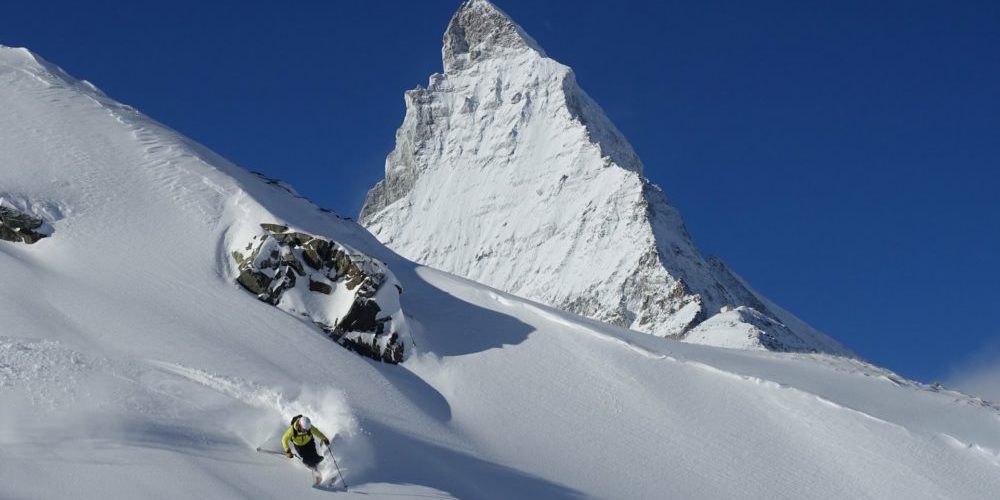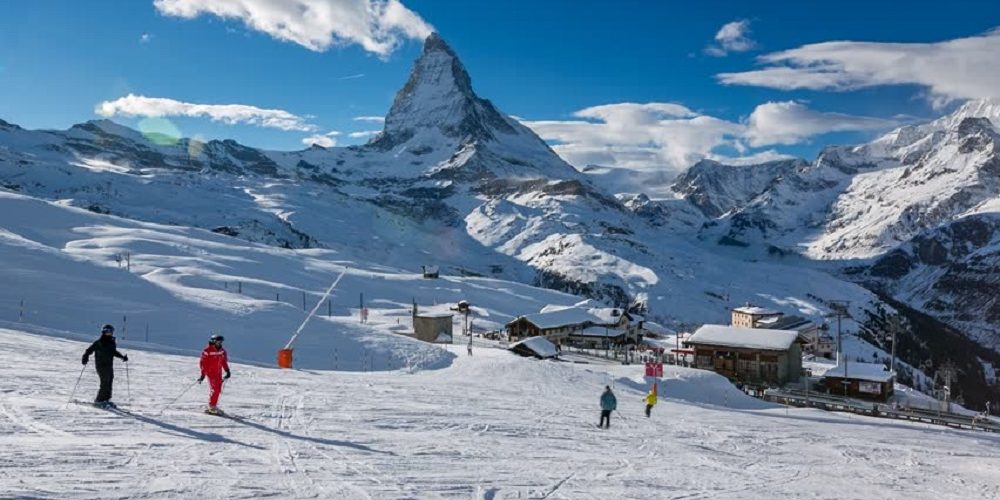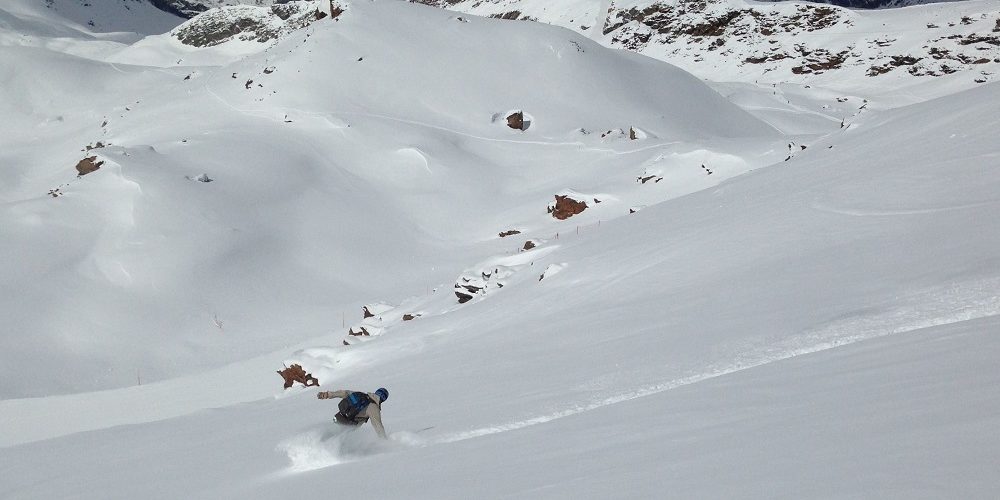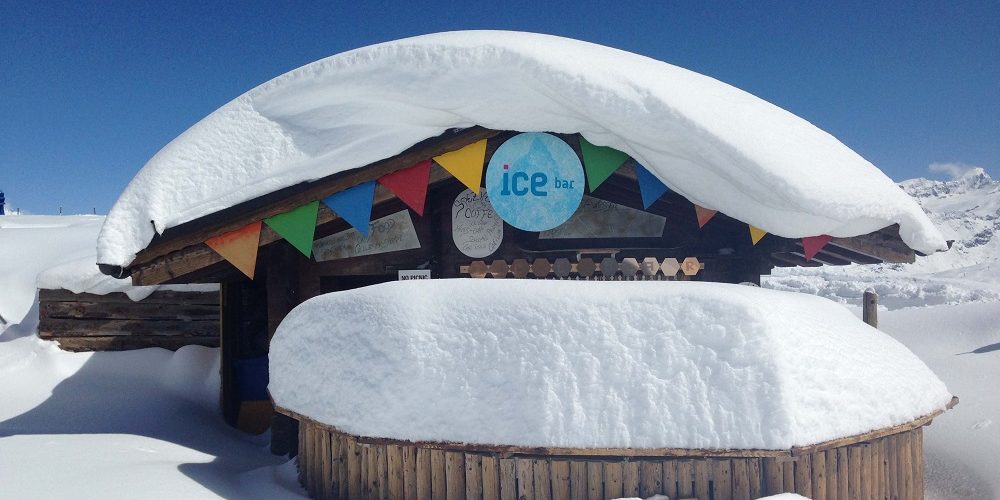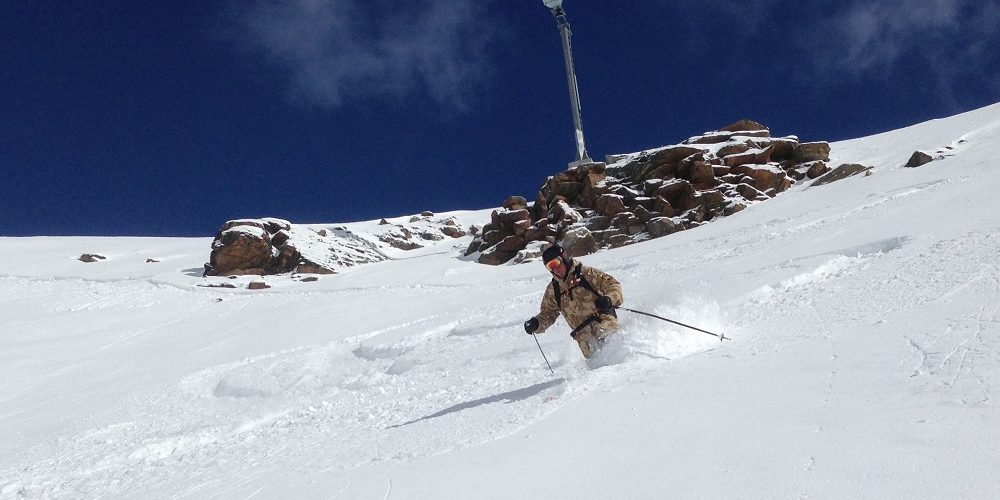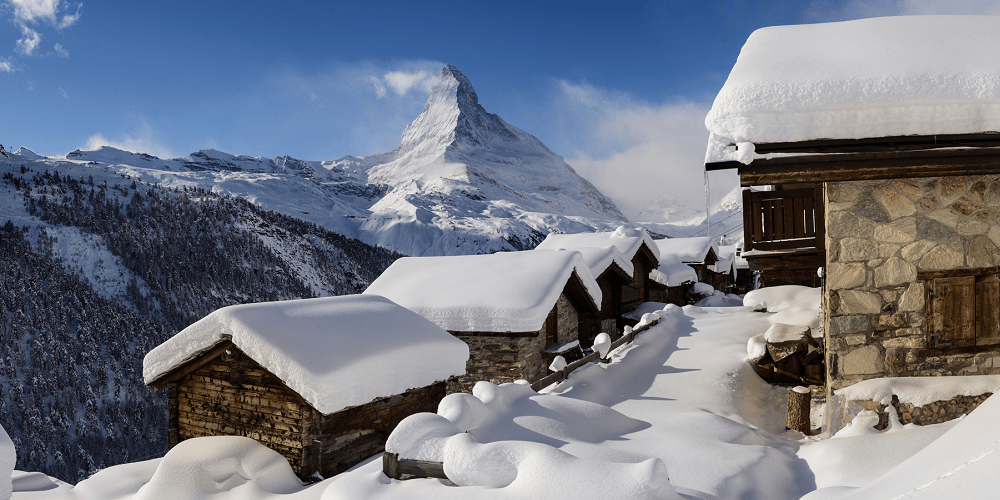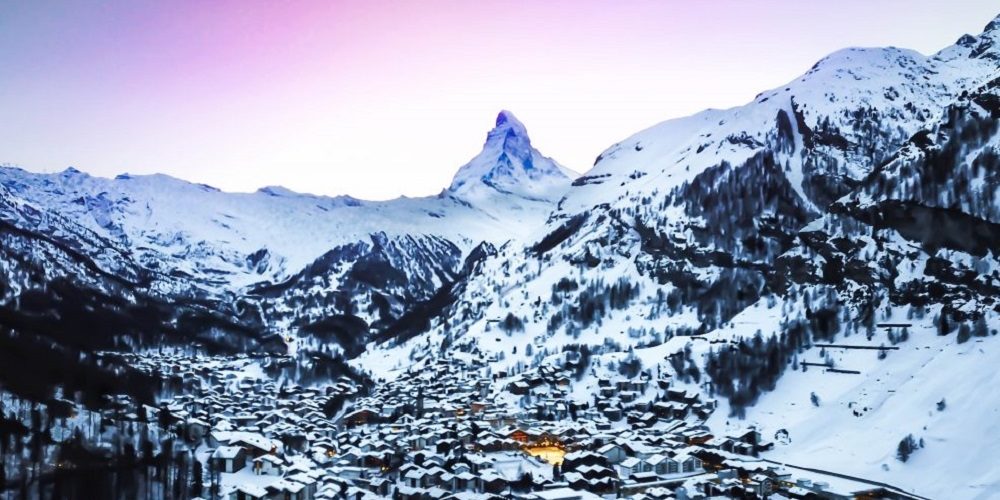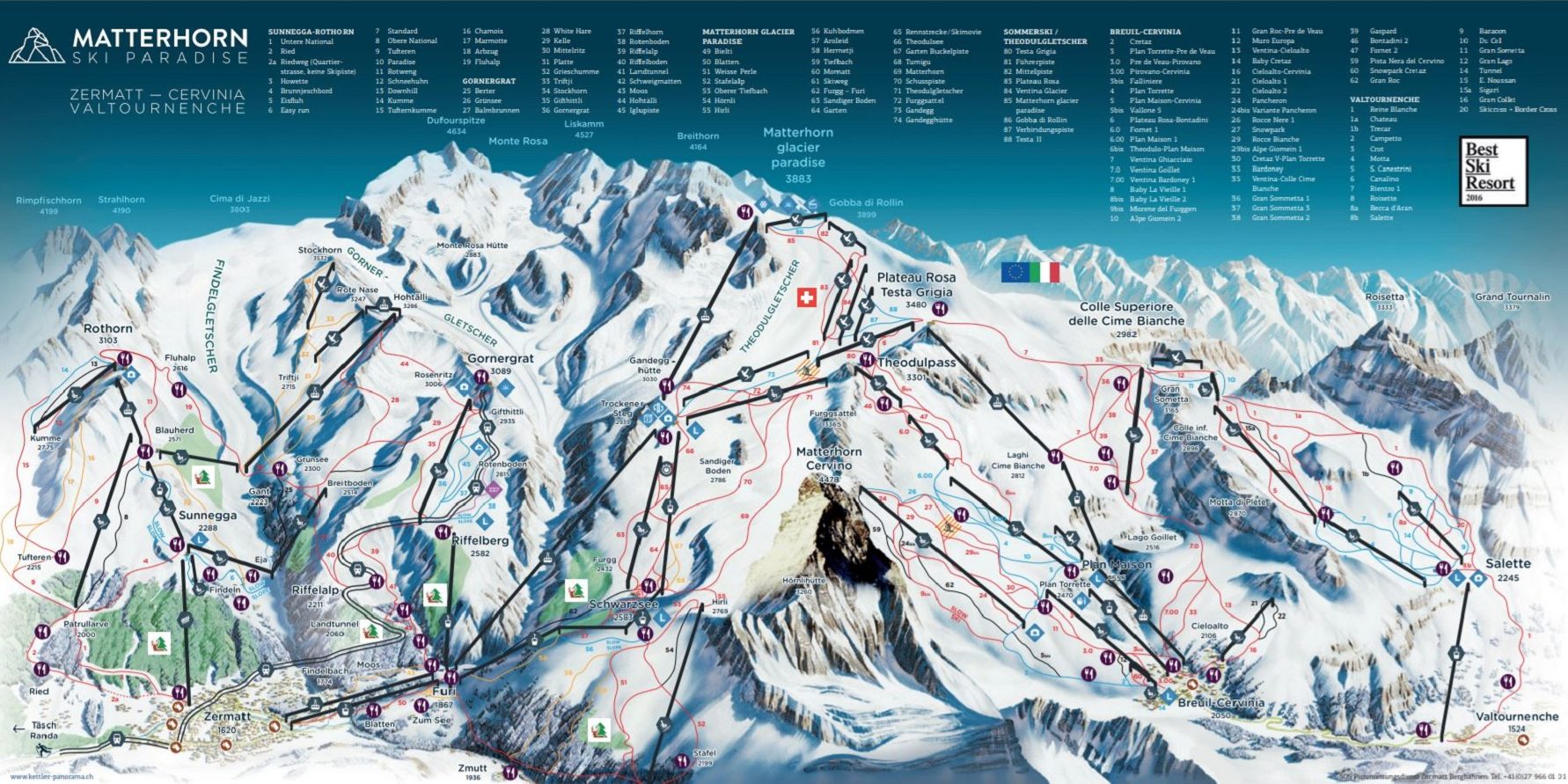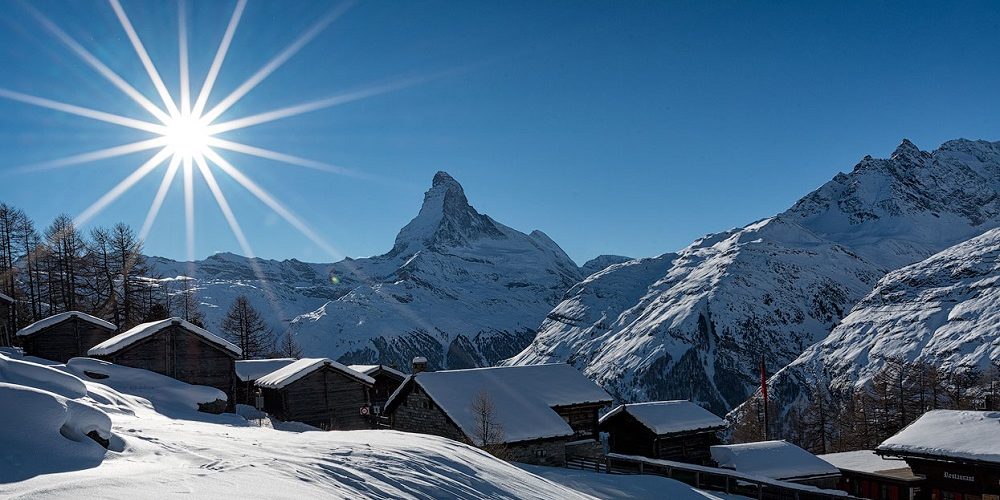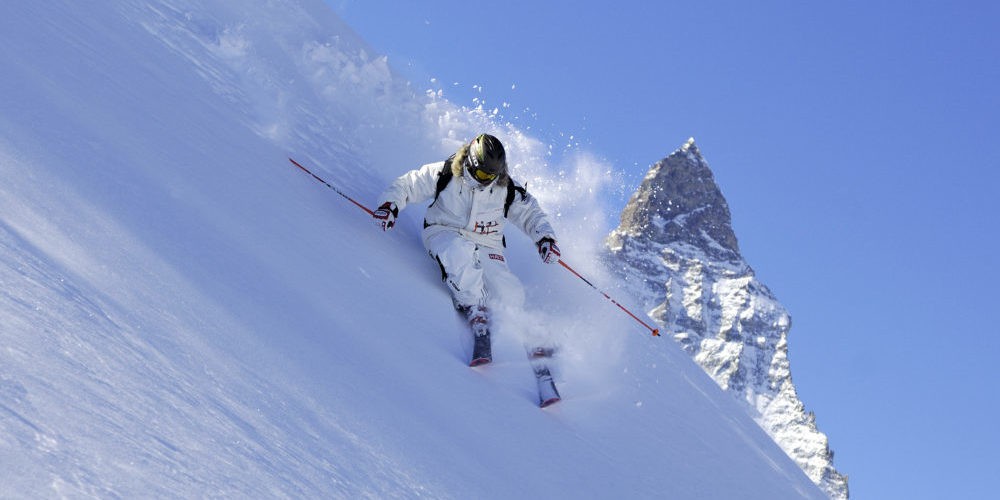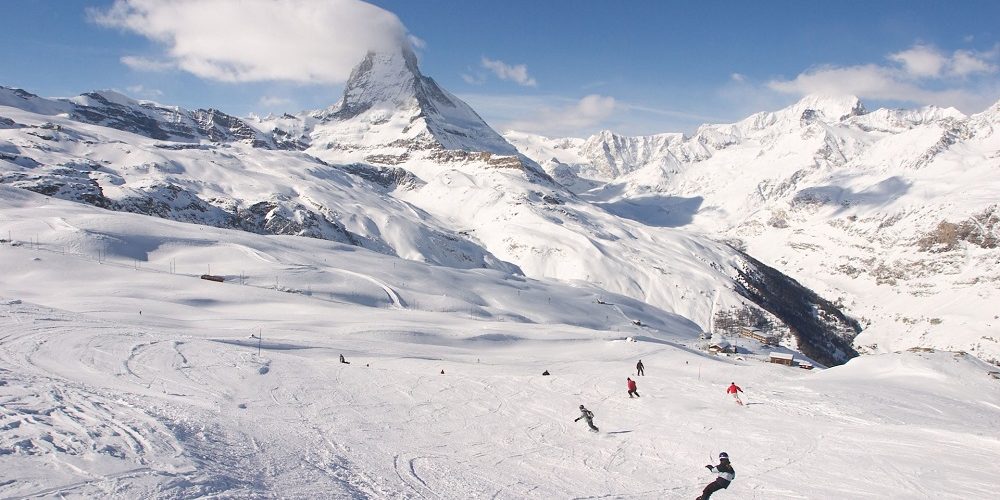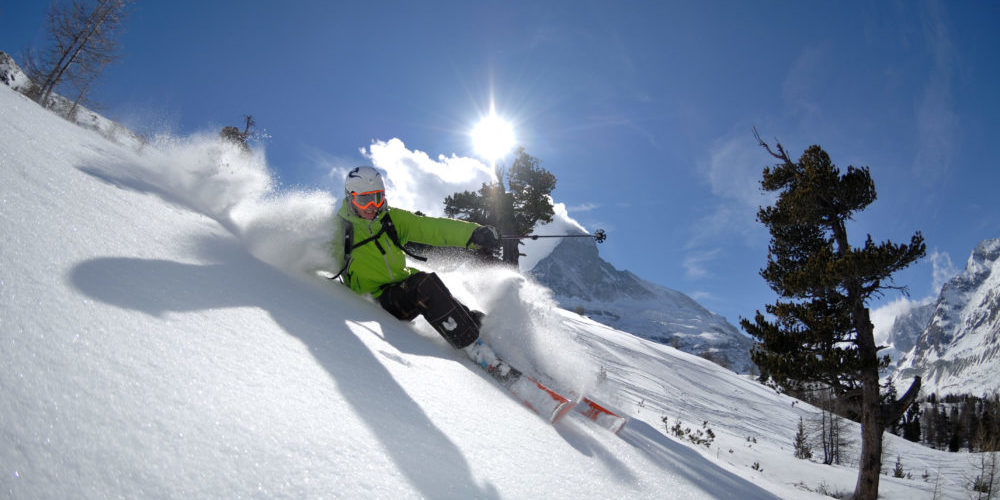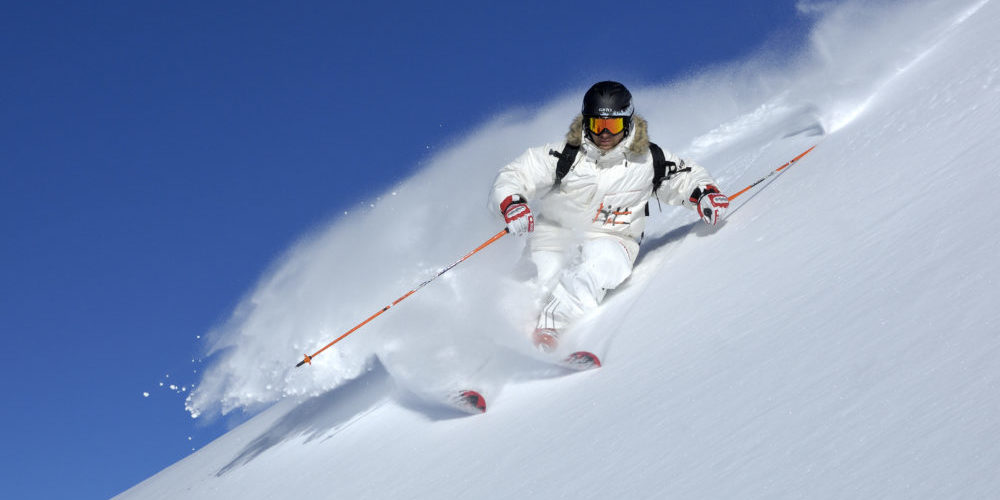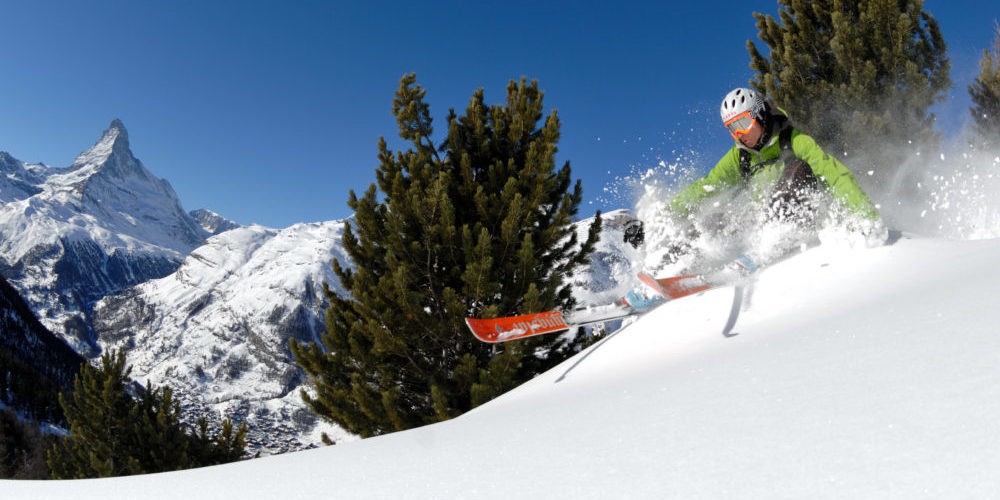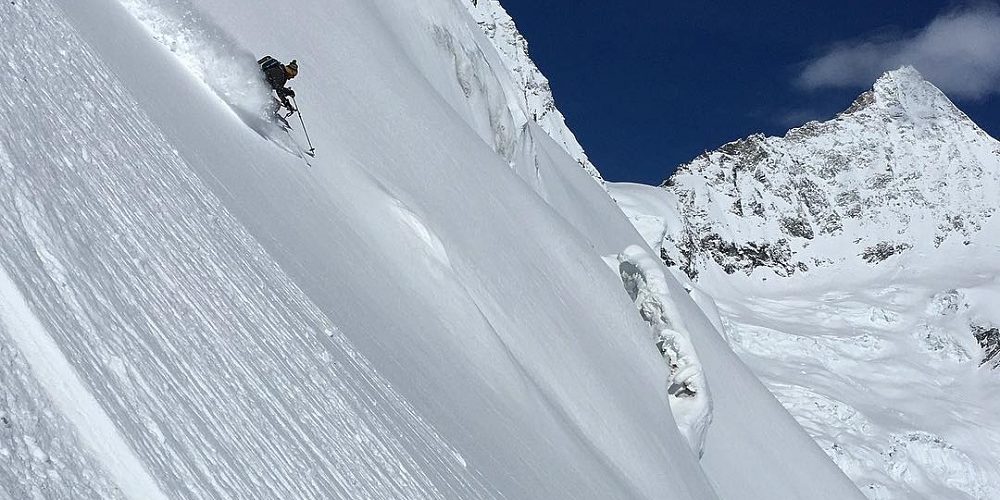Why come skiing in Zermatt, Switzerland?
Zermatt is the Matterhorn village in the heart of the Swiss alps and skiing in Zermatt is unique. Zermatt is rated as one of the top 5 skier’s resorts in the Alps but is also extremely picturesque, car-free and offers spectacular views of the Matterhorn and 28 other 4,000 metre peaks surrounding this mountain village. Known as the “Matterhorn Ski Paradise” the united Zermatt, Cervinia and Valtournenche ski areas offer one of the largest skiable domains in the world. The winter ski area is so extensive and varied, that expert insider knowledge is key to making the most of it. Here is our Mountain Exposure quick guide to skiing in Zermatt; the linked areas of Zermatt, Cervinia and Valtournenche, to help you get the best out of your ski holiday.
The authoritative Where to Ski and Snowboard annual guide selects Zermatt as the top ski resort every year, as does the German language Bilanz magazine.
With 360km of runs spanning two countries, the linked areas of Zermatt in Switzerland and Cervinia and Valtournenche in Italy have far more skiing than you can possibly do in a week. We live here, and yet we are still discovering new slopes every year! The mix of runs is vast, the scenery breathtaking, freeride possibilities are exceptional, the mountain restaurants and apres-ski bars are unique and the accommodation is of course top notch. Few ski vacations in Europe can match what Zermatt has to offer. The highest lift is at 3,883m giving an impressive vertical drop of over 2,356m (the biggest pisted vertical in the world) and snow is guaranteed all year round including in summer!
All key runs benefit from extensive snow-making equipment to boost snow conditions as needed, which together with its glaciers makes Zermatt completely snow-sure. Zermatt also has its own snow park, boarder-cross, half-pipe and cross-country circuit. The very modern lift system has practically abolished waiting times.
There are three separate but connected ski areas and there is a village base station for each one:
Matterhorn Express: A bubble (gondola) which leaves from the Matterhorn (southern) end of the village and takes you to the Klein Matterhorn/ Schwarzsee and Cervinia slopes.
Sunnegga Express: This is an underground funicular which departs from the other end of the village and gives access to the Sunnegga and Rothorn areas, as well as Hohtalli and Stockhorn.
Gornergrat Train (GGB): This cog railway departs from its own station opposite the main station and takes you to the middle area.
It is easy to link all three areas clockwise or anticlockwise: clockwise you start on the Sunnegga sector, cross over to Hohtalli/Gornergrat and finish in the Matterhorn sector.
Anticlockwise you start with the Matterhorn Express, then connect at Furi for Riffelberg and the Gornergrat area, before finishing your day on Sunnegga.
If you start your day on Gornergrat, then it is easy to head from there either to Sunnegga or to the Matterhorn Paradise area.

Skiing in Zermatt: Getting to the Base stations
Zermatt is predominately a pedestrian resort. Depending on where you are staying, one of the three base stations should be close enough to walk to. However, there are electric buses and taxis should you not want to walk to the other end of the village.
- Buses: There are two routes, the main (Green Line) one goes from the train station to the Matterhorn Express station and back, along the river. The other serves the Winkelmatten district of the resort. Use of the bus is free for skiers. If you’re not wearing your ski clothes it is wise to take your ski pass with you. The Green Line runs from 7:00 till 18:30 and runs about every 10 minutes. You can get a timetable from the driver or online.
- Taxis: These are a good alternative at peak times. Along the river to and from the Matterhorn Express station they run a collective service for CHF 3 per skier, where they take as many people as they can going in the same direction and drop you off near, but not necessarily right next to, your destination. You can also take a taxi for yourself of course. There are ranks for unbooked taxis opposite the bus stops at the Klein Matterhorn and Sunnegga stations. You can also find a list of taxi numbers online.

Skiing in Zermatt: On the Mountain
Once you’re heading up the hill, there are several useful things to bear in mind. The ski runs in Zermatt are classified as follows. Blue (easy), Red (intermediate), Black (difficult) or Yellow (marked but neither groomed nor checked – so equivalent to Double Black). Out of 200km of runs on the Zermatt side, 9km are black runs and 38km are yellow.
Absolute beginners should head for the Leisee dedicated learner’s park just below Sunnegga. In general be wary of blue runs in Zermatt, as most would be red in other resorts. However, run N° 73 above Trockener Steg is the ideal beginner’s run. You just have to get to grips with using a T-bar (X1) to access it. The run from Schwarzsee to Aroleid on the Matterhorn Express (56 Kuhbodmen) is also very gentle. Our second favourite beginner’s area includes all the blue runs accessed from the Riffelberg chair (M).
N.B. We don’t recommend beginners taking any of the runs back down to the resort – you’re far better off using the lifts.
For beginners becoming intermediates, Cervinia is where you should go! 90% of the runs are easy motorway cruising. Also, all runs above Trockener Steg. And perhaps Rothorn down to Sunnegga when you are ready for something a little more challenging but still achievable.
For intermediates: It’s all yours! All of Zermatt’s runs will fulfil your dreams, except perhaps for the ones in the next section.
For experts, everything black and yellow on the piste map. Note that all the yellows (known as unprepared descent routes, or itineraries) used to be black, but since they are harder than black their new colour is yellow. The equivalent of double-diamond black in the USA. There was a time when skiers accepted risk, but in the face of increasing litigation many resorts now prefer not to classify difficult slopes as official runs. These yellow itineraries are now made avalanche safe but are otherwise left un-groomed and un-patrolled at the close of the day. This renders them all the more challenging, with the additional benefit that after a snowfall they become the perfect free-ride domain.
Most of these runs only open from late January onward, when the snow cover builds up sufficiently. Each area has its glories, but we would like to share our hints and favorite runs with the guests staying in one of our luxury chalets.

Please get in touch and we will be happy to assist you with more information about the resort and skiing in Zermatt. As a Zermatt specialist, we have a knowledgeable and experienced bookings team ready to help you with all the details needed to make the best choice for a unique Zermatt ski holiday.

